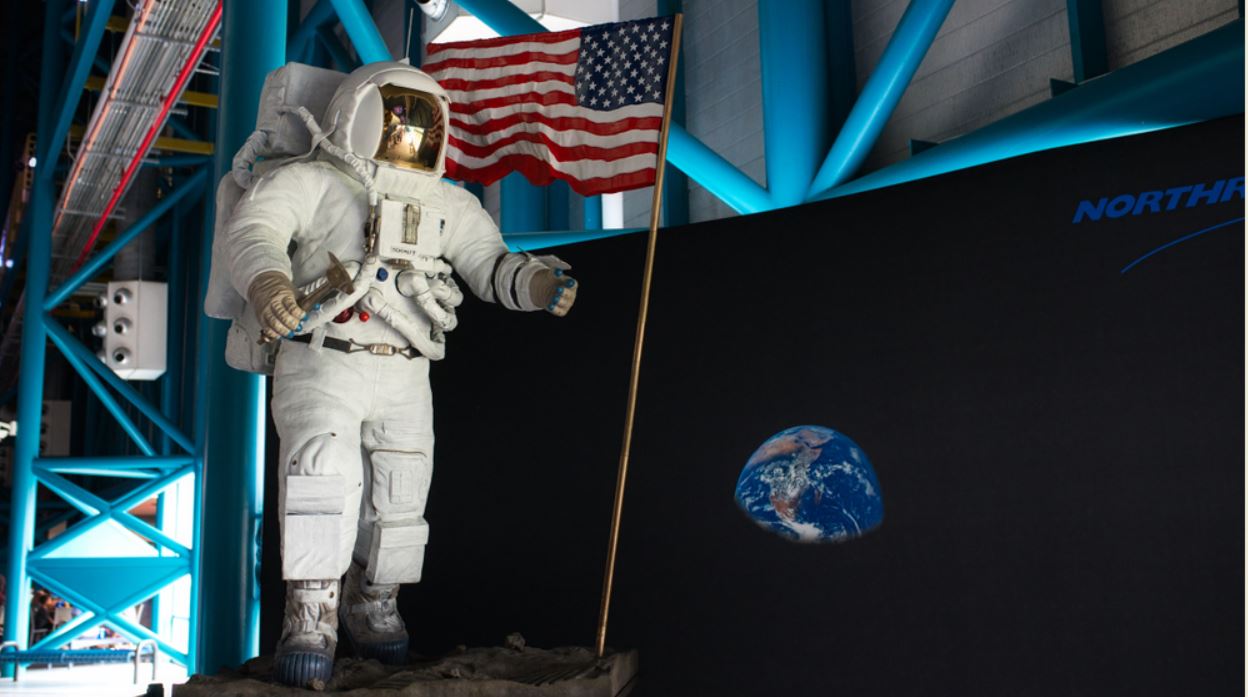Destination Moon: is it time for us to send astronauts back?
The series For All Mankind (2019) is a fictional alternate history that imagines a world where the Soviet Union was the first power to send an astronaut to the moon. From that starting point, the two rival superpowers compete to establish their own lunar station.

Just a few short years later, the scenario is no fantasy. Fifty years after the Apollo 11 mission in 2019 the United States announced its intention to return to the Moon in 2024. In light of the concept of “New Space”, this new ambition highlights a growing geostrategic competition, particularly given China’s precipitous rise.
Artemis, one step ahead
To succeed on this mission, NASA has promoted the Artemis program, a consortium led by the United States that brings together eight other countries – Australia, Canada, Italy, Japan, Luxembourg, Ukraine, the United Arab Emirates and the United Kingdom. NASA and Brazil signed a statement of intent in December 2020 to join the program. Each participant will contribute to the completion of the mission with technical and scientific support.
NASA is also counting on the private sector, including the SpaceX Starship (SN1), to fulfill the human landing system (HLS) program. The program will have three stages:
- Artemis I, an unmanned flight scheduled by the end of 2021.
- Artemis II, a manned flight with the goal of positioning the spacecraft in orbit around the Moon in 2023.
- Artemis III, which will launch the lunar lander with two astronauts in 2024.
In Japan, the Toyota Group has partnered with the Japan Aerospace Exploration Agency (JAXA) to propose a pressurized lunar vehicle that would participate in future missions of the international program.
China also has an ambitious program in the works – the January 2019 landing of the Chang'e-4 spacecraft on the far side of the Moon demonstrates its spectacular progress. In the summer of 2020, the China National Space Administration (CNSA) reiterated the country’s intention to create an international lunar research station (ILRS) as soon as 2036. Moscow signed a memorandum of understanding in March 2021 with China to create a lunar station, but no further details are known at this point.
India is another contender. While the country’s space program does not currently envision the construction of a lunar base, it is preparing astronauts for a lunar mission. However, critical failures such as the Chandrayaan-2 crash have slowed down the program’s development. Along with the Gaganyaan program, the Indian Space Research Organization (ISRO) planned to send a manned flight to the Moon, but it will not occur before the next decade.
Settling on the Moon, for what purpose?
Some consider the Moon as a necessary step before a manned mission to Mars, serving as a training ground for astronauts and forming the basis for a long-term human presence. However, the differences between their respective environments limits the validity of this hypothesis: Mars has an atmosphere that changes the access conditions. For the time being, these projects remain in the realm of wishful thinking.
Although no one really knows the possibility and profitability of mining activities on the Moon, groups such as the Planetary Society argue that there are significant resources that could favor such an enterprise.
In recent years, discoveries have indicated significant water-ice deposits at the poles of the Moon. In a multitude of microcraters, 60% of the deposits would be set in the South Pole as recent studies suggest. Although no one has ventured to attempt a complete estimation, some research indicates that a significant volume of water is present – ranging from 100 million to 1 billion tons for each polar area. NASA’s interest in establishing a lunar station in this region is linked to the possibility of extracting water, a critical resource for sustainable human presence. However, the determination of water-ice morphology, concentration, distribution and abundance remains essential, because the energy cost of its extraction depends on its nature. These data will determine the ability to execute any plan to exploit water-ice on the lunar surface.
The lunar soil could also conceal important reserves of helium-3, whose volume would represent nearly 2.5 million tons according to Russian researchers. Rare on Earth, this non-radioactive isotope could potentially serve as fuel for nuclear fusion reactors. But such reactors do not yet exist, and few people dare to make predictions about when they will be built. Very hypothetical to date, the use of helium-3 in the long term would require the design of a cost-effective extraction method with adequate infrastructure and the ability to transport it to Earth.
Furthermore, mining raises major legal issues as the United States has yet to sign the 1979 Moon Treaty along with China and Russia. On April 6, 2020, then-president Donald Trump issued an executive order stating that the United States did not consider outer space to be part of global commons. In his first 100 days in office, President Joe Biden signed more than 60 executive orders, but had not yet indicated if there would be a change in the US’ position on space resources.
Finally, NASA has unveiled the LunaNet architecture in its Artemis program. This device would facilitate the transfer of data between the Earth and the Moon, allowing astronauts to be alerted in real time when solar flares threaten space-based weather instruments. Complemented by positioning and navigation services, this architecture would secure human activities on the Moon.
Limits and challenges
Returning to the Moon implies significant budgetary efforts, even as the consequences of the Covid-19 pandemic have hit world economies hard. NASA’s 2021-2025 budget for the Artemis program is assured until 2024, set at $28 billion, including $16 billion dedicated to the lunar lander. As yet the Biden administration has not stated that it will increase spending to enable humans to return to the lunar surface, and it could be delayed until after 2024.
The political context of the current Moon project differs from that of the Apollo program in the 1960s. At that time, the United States wanted to assert its superpower status, and the program had bipartisan support from the start. The current NASA program has the support of Congress, but budget negotiations are always troubled in the United States, particularly with the current partisan divisions. While the Democratic party control the House and Senate, the margin is exceedingly thin, particularly in the Senate. Therefore, NASA’s program needs lasting political support to be successful.
Given the financial uncertainties, technological hurdles, and logistical obstacles, a successful implementation of the US space program faces a wide range of challenges. In the context of the Earth’s environmental crisis, therein lies a question: will this return to the Moon be sustainable or will it just be a last-ditch effort?
> Find the article on The Conversation

Media:

Share









